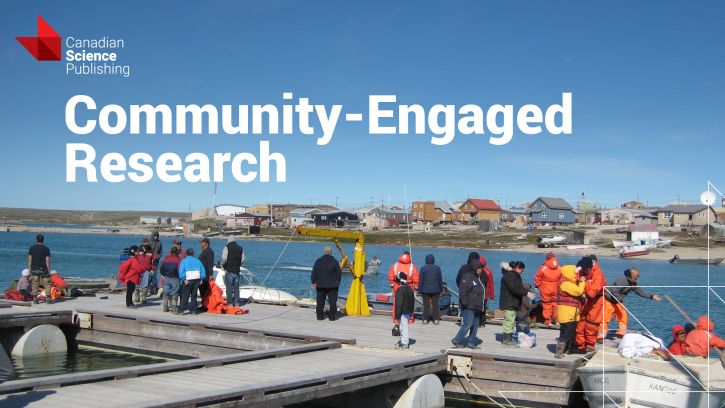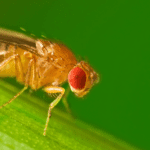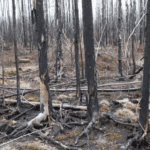In this series, we’re sharing practices of community-engaged research (CER): researchers and community partners working together to advance community goals and science.
Thinking about “duty to consult” as scientists in Canada
When beginning a research project, academic scientists consult with different groups. They may consult with co-applicants of a grant on the budget or with co-authors on the methodologies to use. For community-engaged research (CER) projects, researchers consult with community partners to ensure the alignment of research questions with community goals.
With calls for decolonial approaches to research, Western science practices need to be reconciled with CER with Indigenous communities (e.g., acknowledging Indigenous data sovereignty).
In Canada, consulting with Indigenous communities is a legal requirement for the country’s federal and provincial governments. This consultation is commonly referred to as the duty to consult and arises from the fact that Indigenous peoples maintain section 35 Aboriginal and treaty rights, which includes rights and title to their lands and territories, and as such, these rights are to be protected from government infringement. This consultation supports reconciliation through relationship building with Indigenous Peoples. Consultation creates opportunities to share information and perspectives, supports comprehensive policy development, establishes a foundation for future collaboration, and most importantly, ensures that Indigenous peoples’ rights are respected and protected
But what does this responsibility look like for academic scientists in fields ranging from engineering to ecology?
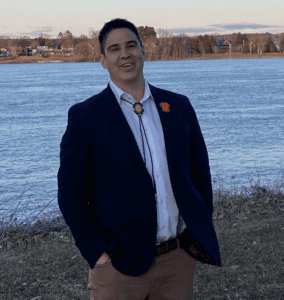 Tyler Patles, Director of Technical Services for the North Shore Mi’kmaq Tribal Council and member of the Natoaganeg First Nation, explains that the duty to consult would be better framed as a question: What impacts does your project have on Indigenous people and their rights? As a researcher, you should consider the duty to consult as an Indigenous impact assessment.
Tyler Patles, Director of Technical Services for the North Shore Mi’kmaq Tribal Council and member of the Natoaganeg First Nation, explains that the duty to consult would be better framed as a question: What impacts does your project have on Indigenous people and their rights? As a researcher, you should consider the duty to consult as an Indigenous impact assessment.
How to begin
Many Indigenous communities have consultation protocols for researchers to follow, alongside ethical principles like OCAP® (Indigenous ownership, control, access and protection). These consultation protocols “create a process for Aboriginal groups and governments to follow when addressing the constitutional duty to consult on impacts… under the Constitution Act.” They also require researchers to follow guidelines when undertaking research in the Indigenous community, including that Indigenous people have sovereign rights to their research and how it can be collected and used.
Whether the research is occurring within a municipality, on Crown land (including those covered by water), private property, unceded Indigenous lands, or on Indigenous reserve land, you first need to learn which Indigenous groups live in the geographical area where you plan to study. One resource you can use to find this information is Native Land Digital.
Patles also suggests performing an internet search for Indigenous organizations that oversee the rights of Indigenous people, such as Indigenous rights-based organizations and/or regional Tribal Councils. You can also reach out to the First Nation communities directly for this information. These organizations can direct you to the proper individuals to contact to begin an assessment of how the research may impact Indigenous communities.
When to begin
You should begin consultations with Indigenous communities when developing your initial research design, including your research questions, goals, methodologies, locations, etc. If the research project is community-driven, these conversations may take place with the local Indigenous communities to help inform the research design.
Consultations should inform research design; projects should consider a community’s way of life and fieldwork should be planned accordingly. For example, if you intend to take samples of flora or fauna at a particular location, you’ll need to determine whether it’s a protected area or a space where the community hunts, fishes, or harvests. You’ll then need permission to take samples from this area and to ensure that your sampling procedure doesn’t interrupt these activities.
Starting a dialogue early can also minimize the re-arrangement of initial plans and timelines and avoid financial implications.
“Back in August of 2023, there was a water main project in Ingonish, Nova Scotia, a municipality that has been in existence since the early 1900s and known to the local First Nations to be place of ceremony that held cultural significance. When contractors were performing their work, they uncovered Mi’kmaq artifacts known to be over 2000 years old. Nobody from the surrounding First Nation communities was contacted before that project started,” Patles shared. “A lot of our knowledge is oral knowledge and not documented, so reaching out to the surrounding First Nation communities would have let those on the project know… what could be encountered” and, importantly, informed the First Nation communities about what was happening in their traditional territory.
Building relationships
The duty to consult is more than an email letting an Indigenous community know your plans. It’s about building a relationship. It’s a discussion with two-way communication. As Leigh Joseph, member of Skwxwú7mesh (Squamish) First Nation, writes, “building reciprocal research relationships” can be viewed as a cyclical process.
Relationships can be strengthened by meeting with the community multiple times at multiple stages of the research project (i.e., before, during, and after). Meeting in-person affords the opportunity to see how communities live.
There’s a misconception that these discussions will stall or cancel a project. But this is not the case, says Patles. When you open the discussion up with the affected Indigenous groups, there is an opportunity for members from the communities to enhance your project, add value, or find funding that you may have been unaware of.
The duty to consult also encompasses the duty to mitigate and accommodate. Continuous conversation can reveal when something may need to change. As Inuit youth in Pond Inlet, Nunavutnuit write, “We understand that you have timelines, deadlines, and budgets, but it is important to be flexible enough to work with the flow of the community. Otherwise, your project may not fit with the pulse of the community and people that are busy taking care of family, jobs, and their own needs.”
While the duty to consult originates within Canadian government, academic scientists in Canada can still consider how to extend this framework to progress respectful and ethical research with Indigenous communities. Resources and training are available and can be found through agencies such as SSHRC, NSERC, and Indigenous Corporate Training Inc.
Protocols and Legislation for Government Research Projects
Researchers working on a government project may have additional responsibilities and specific guidelines to follow when consulting. Government of Canada departments and agencies—and their researchers—are responsible for understanding how and when their activities could have an adverse impact on Aboriginal and treaty rights. Crown-Indigenous Relations and Northern Affairs Canada (CIRNAC) coordinates and advises federal officials on the duty to consult by: providing policy direction on consultation practices, sharing information on Indigenous groups, agreements, claims and more through the Aboriginal and Treaty Rights Information System (ATRIS) and the Consultation Information Service (CIS), developing partnerships with Indigenous groups and organizations, supporting coordination with provinces, territories and industry partners, and delivering training and guidelines to federal officials on the duty to consult.
The United Nations General Assembly adopted the United Nations Declaration on the Rights of Indigenous People (UNDRIP). The declaration establishes a universal framework of minimum standards for the survival, dignity, and well-being of the indigenous peoples of the world. The UNDRIP Act received Royal Assent in 2021, in Canada. The Government of Canada has a constitutional duty to consult Indigenous peoples when it considers measures that might adversely impact their potential or established Aboriginal or treaty rights.
Moving Ahead
The duty to consult with Indigenous communities is not just a legal obligation but a moral imperative. It fosters mutual respect, ensures the protection of Indigenous rights, and builds meaningful long-term relationships. Understanding and respecting consultation protocols, beginning dialogues early, and committing to ongoing communication can transform research projects into collaborative ventures that benefit all parties.
As Tyler Patles emphasizes, viewing the duty to consult as an Indigenous impact assessment highlights the importance of considering the broader implications of your work. Building reciprocal relationships requires effort and genuine engagement, but these relationships can lead to enhanced project outcomes and a deeper understanding of the communities involved. By adopting decolonial approaches and integrating Indigenous knowledge systems, researchers can contribute to reconciliation and advance science in a way that respects and honours Indigenous rights and traditions.
Acknowledgements
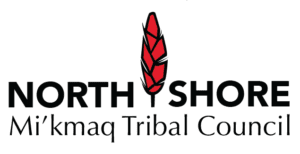 Our greatest thanks to Tyler Patles for sharing his insight with us. Tyler Patles is a member of the Natoaganeg First Nation, situated outside of Miramichi, New Brunswick. He is also an elected official for Natoaganeg First Nation. He’s a graduate of the University of New Brunswick in civil engineering. After living in various provinces throughout Canada and working on different projects in the fields of transportation, municipal, and geotechnical engineering, he started with the North Shore Mi’kmaq Tribal Council, which is a First Nations organization that provides technical advisory support services to seven Mi’kmaq communities in New Brunswick. Tyler is the Director of Technical Services. He also serves on the Chiefs Committee for Housing and Infrastructure for the Assembly of First Nations and is a member of the Indigenous Advisory Committee formed by Engineers Canada.
Our greatest thanks to Tyler Patles for sharing his insight with us. Tyler Patles is a member of the Natoaganeg First Nation, situated outside of Miramichi, New Brunswick. He is also an elected official for Natoaganeg First Nation. He’s a graduate of the University of New Brunswick in civil engineering. After living in various provinces throughout Canada and working on different projects in the fields of transportation, municipal, and geotechnical engineering, he started with the North Shore Mi’kmaq Tribal Council, which is a First Nations organization that provides technical advisory support services to seven Mi’kmaq communities in New Brunswick. Tyler is the Director of Technical Services. He also serves on the Chiefs Committee for Housing and Infrastructure for the Assembly of First Nations and is a member of the Indigenous Advisory Committee formed by Engineers Canada.
Thanks also to Rebecca Michaels-Walker, Rachel Pietersma, Melanie Slavitch, and Natalie Sopinka from Canadian Science Publishing for their invaluable input and contributions to previous versions of this blog post.


